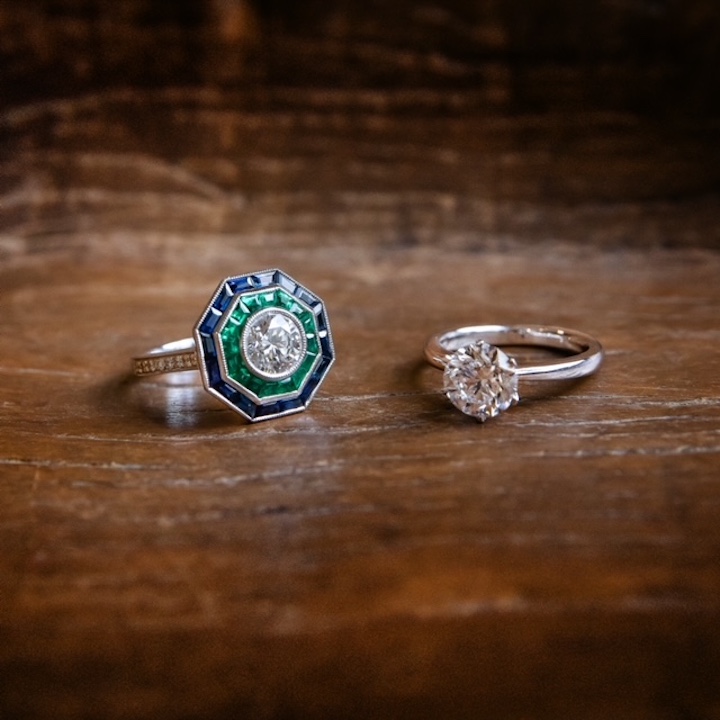Introduction
Choosing between lab-grown diamonds and real diamonds can feel like a diamond dilemma. Both options sparkle with beauty, but they have distinct differences that might sway your decision. Let’s dive into the glittering world of diamonds and explore what sets lab-grown diamonds apart from their natural counterparts.
What are Lab-Grown Diamonds?
Lab-grown diamonds, also known as synthetic or man-made diamonds, are created in a controlled environment using advanced technological processes. These diamonds are made of carbon atoms arranged in the same crystal structure as natural diamonds lab grown diamond vs real diamond, making them virtually identical in appearance and physical properties to real diamonds.
What are Real Diamonds?
Real diamonds, often referred to as natural or mined diamonds, are formed deep within the Earth’s mantle over billions of years under intense heat and pressure. These precious gems are brought to the surface through volcanic eruptions and are then mined from the Earth. Each natural diamond is unique, bearing its own history and characteristics.
Differences Between Lab-Grown and Real Diamonds
Origin and Creation
Lab-grown diamonds are produced in laboratories using one of two methods: High Pressure High Temperature (HPHT) or Chemical Vapor Deposition (CVD). These methods mimic the natural processes that create diamonds but do so in a fraction of the time.
Real diamonds, on the other hand, are a result of natural geological processes. They form under the Earth’s surface and are extracted through mining operations, which can be environmentally invasive and labor-intensive.
Physical Properties
In terms of physical properties, lab-grown diamonds and real diamonds are virtually identical. They both have the same hardness (10 on the Mohs scale), refractive index, and density. This means that lab-grown diamonds are just as durable and brilliant as real diamonds.
Chemical Composition
Chemically, lab-grown diamonds are also identical to real diamonds. They are both composed of pure carbon atoms arranged in a crystal lattice. However, lab-grown diamonds can sometimes contain trace amounts of metals used in the growth process, which can be detected under high magnification.
Environmental Impact
Lab-grown diamonds have a significantly lower environmental impact compared to real diamonds. The process of creating lab-grown diamonds requires less energy and results in fewer carbon emissions. Additionally, lab-grown diamonds do not involve the ecological disruption associated with diamond mining.
Cost and Value
One of the most noticeable differences is cost. Lab-grown diamonds are generally less expensive than real diamonds. This price difference is due to the lower production costs and shorter time required to create lab-grown diamonds. While real diamonds hold more traditional value and status, lab-grown diamonds offer a cost-effective alternative without sacrificing quality.
Advantages of Lab-Grown Diamonds
Ethical Considerations
Lab-grown diamonds are often considered more ethical than real diamonds. The mining industry has a history of labor issues, including poor working conditions and unfair wages. By choosing lab-grown diamonds, consumers can avoid supporting these unethical practices.
Environmental Benefits
As mentioned earlier, lab-grown diamonds have a smaller environmental footprint. They do not require mining, which can lead to deforestation, habitat destruction, and soil erosion. Lab-grown diamonds are a more sustainable choice for eco-conscious consumers.
Cost-Effectiveness
Lab-grown diamonds provide excellent value for money. They are typically 20-40% cheaper than real diamonds, allowing buyers to get a larger or higher-quality stone for the same price. This affordability makes lab-grown diamonds an attractive option for those looking to maximize their budget.
Lab grown diamonds are an innovative marvel of modern technology, replicating the natural process of diamond formation in a controlled laboratory environment. Using methods like High Pressure High Temperature (HPHT) and Chemical Vapor Deposition (CVD), scientists can create diamonds that are chemically, physically, and optically identical to those mined from the earth. These diamonds offer a dazzling array of benefits, including ethical sourcing, reduced environmental impact, and a more affordable price tag. With lab-grown diamonds, you get all the brilliance and durability of a natural diamond without the associated ecological and humanitarian concerns.
Purpose of Purchase
Consider the purpose of your purchase. If you’re buying an engagement ring, you might want to invest in a real diamond for its timeless appeal and potential for appreciation. However, if you’re looking for fashion jewelry or a temporary piece, a lab-grown diamond can provide the sparkle you desire at a fraction of the cost.
Conclusion
In the end, the choice between lab-grown and real diamonds comes down to your values, preferences, and budget. Both options offer stunning beauty and durability, but they cater to different priorities. Lab-grown diamonds shine with ethical and environmental benefits, while real diamonds carry the weight of history and tradition. Whichever you choose, you’ll be adorning yourself with a piece of eternity.



